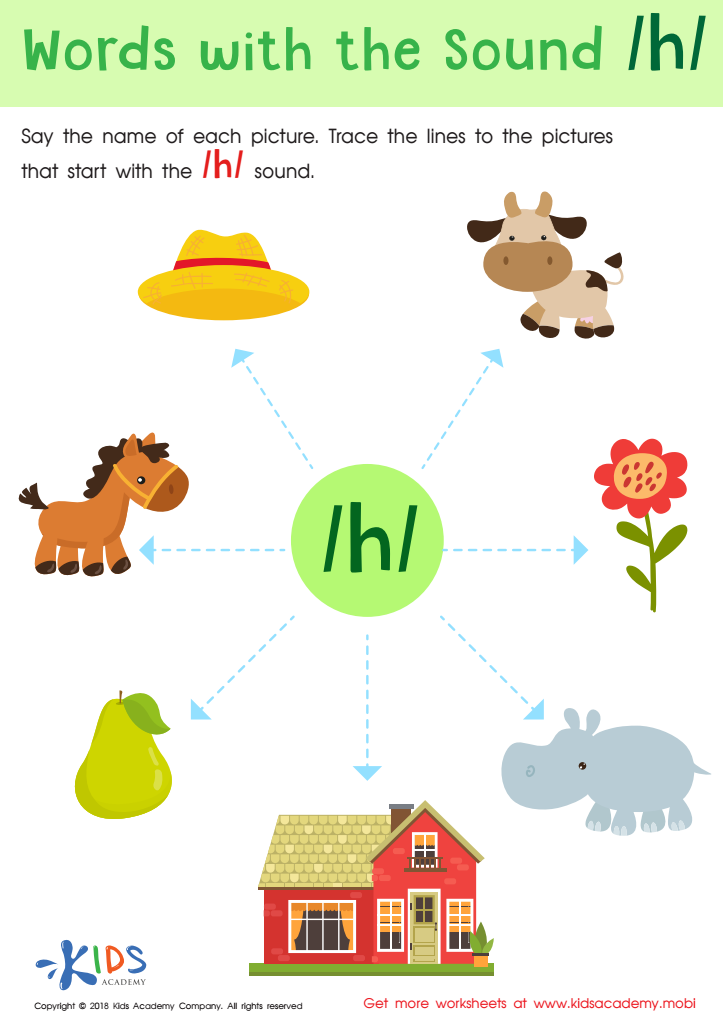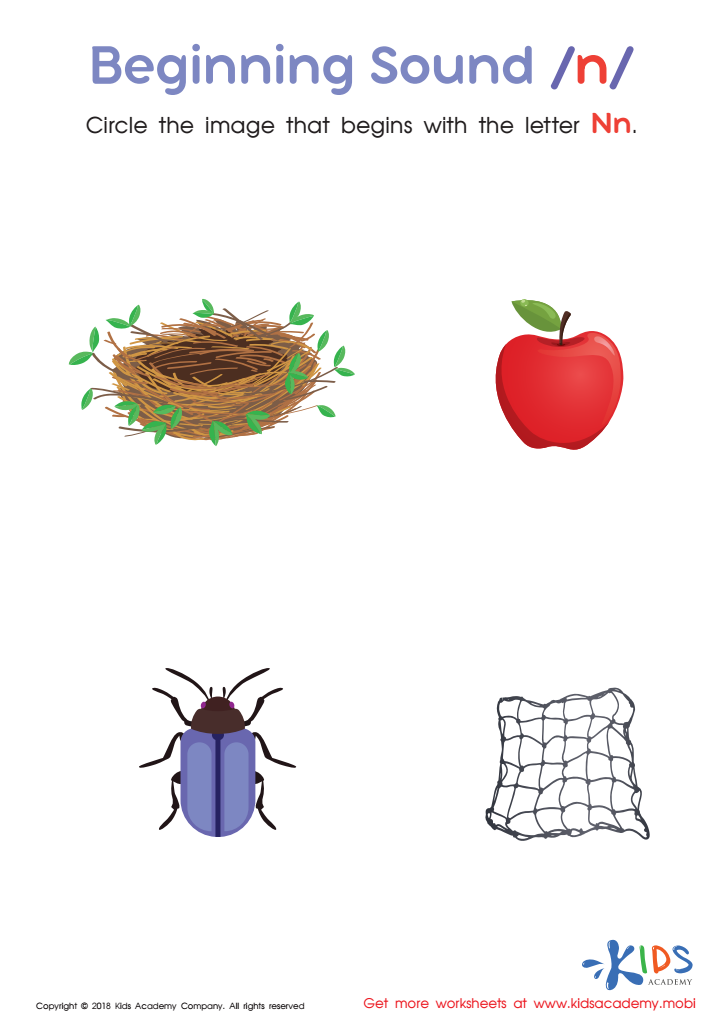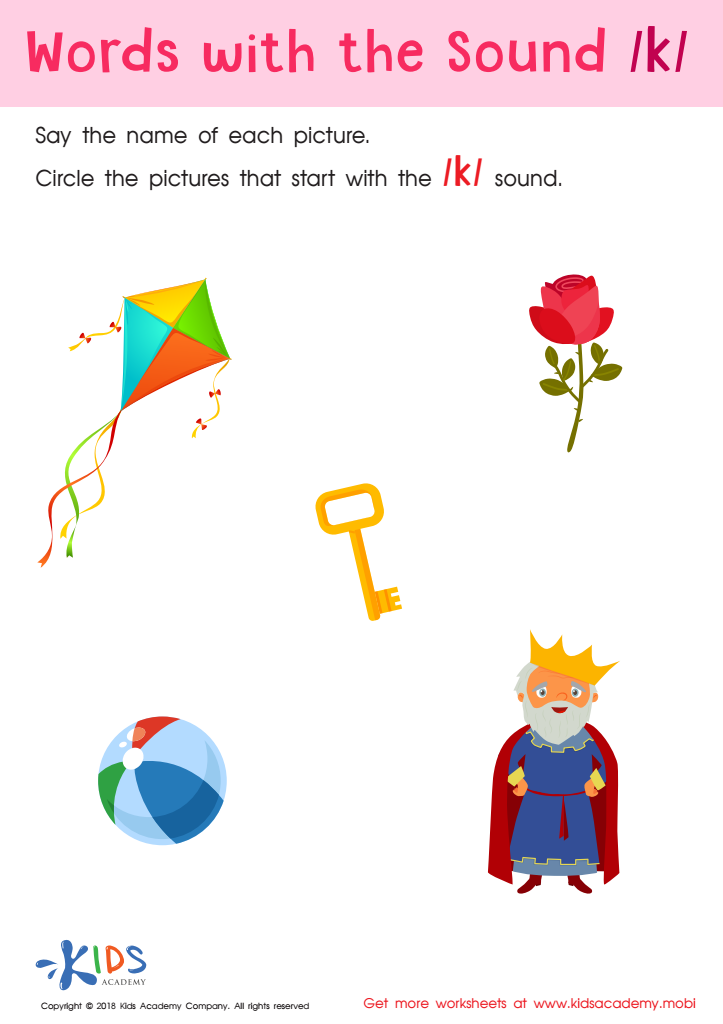Phonics Skills Normal Beginning Sounds Worksheets for Ages 3-6
3 filtered results
-
From - To
Enhance your child's reading foundation with our Phonics Skills Normal Beginning Sounds Worksheets, designed specifically for ages 3-6. These engaging activities focus on developing essential phonics skills by helping young learners recognize and practice beginning sounds. Our worksheets feature colorful illustrations and interactive exercises that make learning fun and effective. With a variety of formats, including matching games and tracing, children will improve their phonemic awareness and boost their confidence in reading early words. Ideal for home or classroom use, these resources support early literacy development, ensuring a solid groundwork for future learning. Start your child's reading journey today!


Words with sound h Reading Worksheet


Beginning Sound «n» Worksheet


Words with sound k Reading Worksheet
Phonics skills, particularly understanding normal beginning sounds, are crucial for children ages 3-6 as they lay the foundation for reading and language development. At this young age, children are developing phonemic awareness, which is the ability to recognize and manipulate sounds. Beginning sounds help young learners connect the sounds they hear with the letters they see, which is essential for decoding words as they read.
Fostering these skills helps promote early literacy, enabling children to become more confident readers. When kids learn to recognize and produce beginning sounds, they can more easily sound out words, leading to improved vocabulary and comprehension. Additionally, engaging in phonics activities can enhance listening skills, memory, and attention span, which are vital for overall academic success.
For parents and teachers, focusing on normal beginning sounds encourages a playful and interactive learning environment. Singing songs, playing rhyming games, and reading aloud are effective strategies that make learning fun and engaging. Involving children in phonics activities not only reinforces their language skills but also strengthens the parent-child or teacher-student bond, igniting a love for reading that can last a lifetime. Supporting young learners early on sets them on a path to literacy and lifelong learning success.
 Assign to My Students
Assign to My Students














